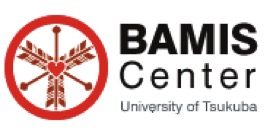About us
The Words from Prof. Soya
Our laboratory tries to make a new concept regarding “Brain Fitness”. We especially focus on how exercise affect our brain and improve exercise performance concomitantly and try to unravel its mechanism. We hope that everyone could overcome any kind of stress and have happiness in our daily life.To make this goal possible, we call this anti-stress and always looking forward status of brain, “Brain Fitness”. We aim to increase brain fitness by using physical exercise that we usually do in our daily life. Recent studies regarding biochemistry, physiology and neuroscience also showed that exercise not only increase the consuming of calories, but also could activate our brain, improve our mood and increase cognitive function during certain conditions.
Brain and brawn are all belong to our body and may share the same features. Fatigue will occur in them; and training will increase their function. Thus, we have to find the most proper exercise condition to improve our brain fitness. By this approach, we could increase the additional value of daily exercise and serve exercise as an alternative medicine. It will benefit for our country highly increased problems such as depression, aging and aging-induced cognitive deficits.
For the basic research, how exercise stimulate our brain is very important. Respected Jacques Monod said” Occasional exercise must have something to the brain”. However, the basic information is still not well known (That’s where the treasures are). For example, in our laboratory, we have already found that exercise around 50-60%VO2max (Lactate Threshold, LT) activate hypothalamus, which related to metabolism, endocrine and autonomic nervous system; while mild exercise such as walk under LT is enough to activate our cognition center, hippocampus. In summary, we may say that moderate exercise (LT) is suitable for our metabolism and mild exercise (under LT) is good to improve our cognitive function. The type, duration and frequency of exercise will need to be optimized.
In the ancient world, several philosopher and poet got their inspiration from a little exercise, like walk. How does exercise work in the brain?
Recently, our laboratory found that only 2 weeks mild exercise enhance hippocampal neurogenesis. Moreover, 6-week mild exercise training increases the size of hippocampus (Okamoto et al., PNAS, 2012). The data are just consistent with the concept ”Brain and Brawn, one and the same”. Even brain and brawn are quite far from each other; they share the same adaptive feature that by the stimulation from environment or exercise, the newborn neuron could be increased. Also, the cognitive function is increased by the same stimulation. Is it possible that the elder addict to climb mountain of Tsukuba because of their muscle remember the effect of exercise?
We also have to focus on acute high intensity exercise. It may cause acute stress, however, the acute stress maybe good for our body. Chronic stresses are problematic. For example, restrain stress causes ulcer, shrink hippocampus and decreases memory function. Japanese Marathon athletes run 1000km for a month as a usual training. However, this kind of training may further cause stress problem and depression in the Marathon runners. This problem will be the important issue in our laboratory in the near future.
Currently, high intensity interval training (HIIT) becomes a spotlight all over the world. HIIT not only increase the power of the athletes, but also increase the performance (Gibala et al., 2012). The man who discovers HIIT is Zatopek from Czech. He was a Czechoslovak long-distance runner best known for winning three gold medals at the 1952 Summer Olympics in Helsinki. He won gold in the 5,000 metres and 10,000 metres runs, but his final medal came when he decided at the last minute to compete in the first marathon of his life. He was nicknamed the "Czech Locomotive". In 1954, Zátopek was the first runner to break the 29-minute barrier in the 10,000 meters. Three years earlier in 1951, he had broken the hour for running 20 km. He was one of the greatest runners of the 20th century and was also known for his brutally tough training methods. He was the originator of interval training and hypoventilation training. In February 2013, the editors at Runner's World Magazine selected him as the Greatest Runner of All Time. He is the only person to win the 5,000 meters, 10,000 meters, and marathon in the same Olympics. Recently our group found that during exhaustive exercise, not only muscle but also brain decreases their glycogen (Matsui et al., J Physiol, 2011; 2012). It is possible that pre-learning of training could effectively decrease the consumption of glycogen during reminded training. Thus, increased the concentration and may have high quality practice at the end.
It is necessary to modify the old exercise and training style since the natural sciences did not mention the sports sciences a lot. It will be much more meaningful to examine the effect of exercise and training especially target to the brain, which just like brawn will also change according to various stimuli. To accomplish our goal, we need the very accurate technique and with perfect practice, everyone could become a scientist. In our laboratory, every member should think in this way and never stop to find the novelty of our research. Most importantly, to experience exercise by yourself, whether it failed or not. Experiences are very important for one to generate the reality. No matter what kind of things, just expand your imagination and curiosity then believe it, make a move try and error again and again. The big finding always begins from a very little process in our daily life. Let’s find the Columbus’s egg in the sports science together!







